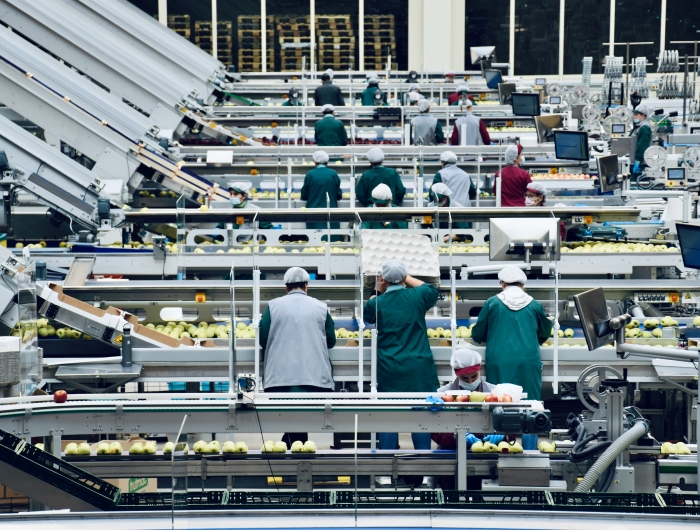Power of procurement: Food service and government

Arno Senoner - unsplash.com.
Governments can promote healthy diets by procuring nutritious foods for public food service and sales.
Taxpayer-funded institutions at the federal, state, and local levels spend billions of dollars on food each year, including the military, correctional facilities, public hospitals, public parks, government worksites, public universities, and feeding programs for people with low incomes. Governments have a unique opportunity and responsibility to lead by example by ensuring that foods and beverages served and sold in public settings promote healthy diets. Furthermore, governments can catalyze a sustainable and just food system transformation by leveraging their substantial purchasing power to drive change throughout the supply chain. Instead, the vast majority of government food purchasing prioritizes the lowest cost at the expense of the public interest.
Which institutions matter?
Anchor institutions include public and private organizations that are rooted in place, hold significant investments in real estate and social capital, and are typically among the largest employers in their communities. Examples of anchor institutions that purchase and serve food at a large scale include schools, prisons, hospitals, and universities. Just two of these sectors, hospitals and universities, employ 8% of the U.S. workforce. As such, anchor institutions are uniquely positioned to positively impact the health of their communities.
Public institutions are a subset of anchor institutions that are government-controlled and taxpayer-funded. Public institutions at the federal, state, and local level spend billions of dollars on food each year, including K-12 school districts, the military, correctional facilities, public hospitals, public parks, government worksites, public universities, and feeding programs for people with low incomes.
This toolkit focuses on food purchasing and food service in public institutions other than K-12 schools. Our Healthy School Meals for All Toolkit provides resources for advocates to improve school meals.
What is values-aligned food procurement?
Challenging the status quo, values-aligned food procurement prioritizes a defined set of values, other than the lowest cost, in government food purchases. This approach helps to ensure that food purchasing advances, rather than undermines, the public good.
For more than a decade, CSPI has advocated for governments and anchor institutions (e.g., hospitals and universities) to adopt strong nutrition standards for the foods purchased and served in their facilities and programs. In that time, at least 80 state and local governments have adopted such measures, though with varying strength. To learn more, explore our map of state and local food purchasing and service policies. If we’re missing any policies, please let us know at policy@cspinet.org.
View Healthier Food on State and Local Property map in a new tab
In parallel, the movement for holistic values-aligned public food procurement has gained momentum over the last decade. In addition to promoting consumer health, values-aligned food procurement aims to:
Leverage the collective purchasing power of public institutions to increase the amount of ethically produced foods being purchased and served;
Increase transparency throughout the supply chain so that institutions can easily make choices for ethically produced foods; and
Transform the marketplace to make ethically produced foods available and affordable to eaters served by institutions as well as the surrounding community.
The movement has coalesced around five core values that should be operationalized in food procurement: (1) local and community-based economies, (2) environmental sustainability, (3) valued workforce, (4) animal welfare, and (5) community health and nutrition. The foundational Anchors in Action (AiA) Aligned Framework also recognizes three core principles for values-based food procurement: (1) racial equity, (2) climate justice, and (3) food sovereignty.
Since 2012, at least 60 local public institutions (which represent thousands of individual cafeteria sites, food service operations, and venues in K-12 school districts, local jails, and other municipal agencies) have enrolled in the Good Food Purchasing Program (GFPP), a gold-standard purchasing framework and verification system. The Center for Good Food Purchasing works with institutions enrolled in the GFPP to assess their food purchases and provide technical assistance with implementing standards corresponding to each of the five values. Eighteen local jurisdictions (including school districts) have adopted the GFPP through a formal policy, and eight cities and counties have adopted GFPP in both schools and other institutions. In the healthcare sector, Health Care Without Harm supports both public and private health systems with technical support and benchmarking through its membership organization, Practice Greenhealth. Food purchasing is one of their technical assistance topics. Members include all federal medical facilities within the Veterans Health Administration and the Defense Health Agency.
Tags
Topics

